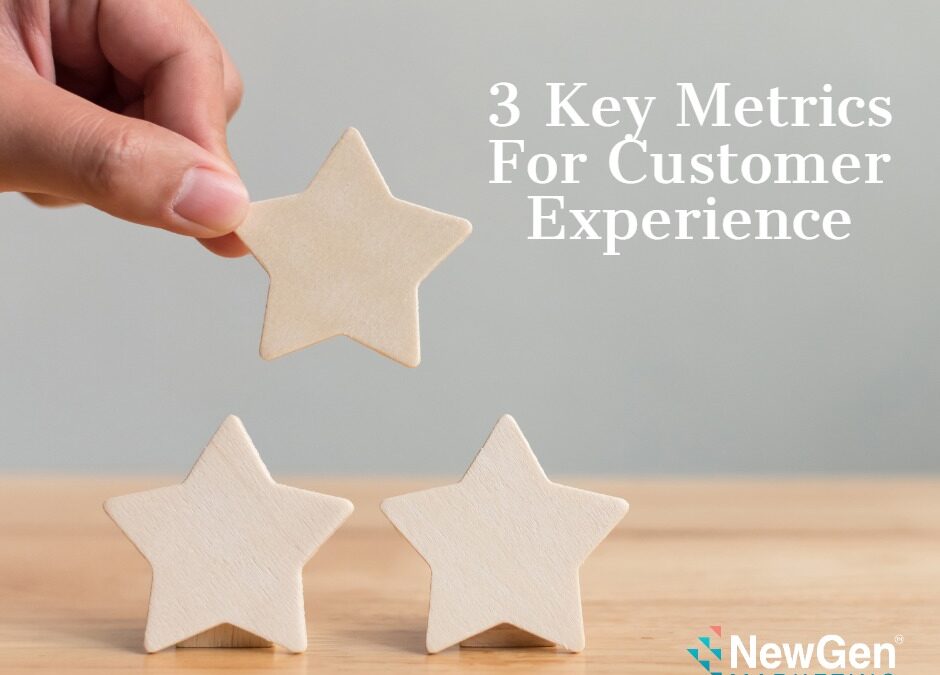How do you know that your customers are satisfied with the service they receive from their brand? If your company doesn’t have a system in place for tracking and measuring customer satisfaction, you’re neglecting a key factor that contributes to brand loyalty and customer retention: customer experience (CX).
Customer experience describes the impression customers form of your brand, products and services throughout the buyer’s journey. CX significantly impacts your revenue and bottom line. Satisfied customers demonstrate greater loyalty with repeat purchases, referrals to their network and positive reviews online. On the other side of the equation….approximately 50% of loyal customers have left a company for a competitor who was more relevant and able to better satisfy their needs.
Luckily, there are concrete customer experience metrics your company can measure to gain a better look into your customers’ minds. Keep reading to learn more.
Why Is Customer Experience Important?
In a competitive field, the customer experience is what sets brands apart. Today’s customers have multiple choices when they’re making purchasing decisions. If a brand can’t provide a satisfactory customer experience, customers can and will find another brand that does. Informed consumers value convenience, accessibility, a personalized journey and excellent customer service just as much as they value the quality of the products and services being sold to them. Approximately 33% of American customers will consider switching companies following one instance of poor service and 60% of customers will consider switching companies following 2-3 instances of poor service.
Providing a great customer experience increases brand loyalty and customer retention. Loyal customers are cost-effective to maintain, make more repeat purchases, are more open to upselling and cross-selling, leave good reviews, give referrals to family and friends, and promote your brand on social media.
One way your brand can provide a quality customer experience is by regularly tracking and measuring customer experience metrics. CX metrics give your brand insight into the effectiveness of your service processes and help you identify obstacles and areas of weakness that need improvement.
Below, we’ve listed 3 customer service metrics your company can use to begin gaining insights into how your customers feel about your brand, products and services.
3 Metrics to Track and Measure CX
Net Promoter Score (NPS)
The net promoter score measures how likely customers are to recommend your brand, products and services to others. NPS is a standardized and well-known customer experience metric. It’s simple for customers to complete and businesses to track and analyze.
Customers receive a post-interaction survey that asks them to answer the following question: How likely are you to recommend [brand] to a friend or colleague? Customers respond on a scale of 1 (never recommend) to 10 (always recommend).
Respondents are grouped as follows: brand detractors (0-6), passives (7-8) and promoters (9-10). NPS is calculated by subtracting the percentage of detractors from the percentage of promoters.
Why measure it? NPS gives your company a high-level overview of customer loyalty. A low NPS is a sign that it’s time to take a deeper dive into what your company can do to provide better customer service, improve products or services, and build stronger relationships with customers to earn their loyalty. Don’t underestimate the power of brand promoters: 81% of customers trust recommendations from family and friends over those from companies. And happy customers share their experiences with and refer approximately 11 people. Gain more value from your NPS surveys by including a section where customers can provide an explanation for their score. The responses will give you specific insight into how your customers think and feel.
Customer Satisfaction (CSAT)
The customer satisfaction score measures the overall satisfaction customers feel after an experience or transaction with your brand. Like NPS, it’s a well-known customer service metric that’s easy for customers to complete.
Customers receive an automated post-interaction survey that asks them to rate their experience on a scale of 1 (not satisfied) to 5 (extremely satisfied). CSAT surveys are triggered after customers experience certain touchpoints with your brand (like resolving a support call, completing a transaction online or concluding an appointment). Many brands aim to receive CSAT survey results from a customer within 30 minutes of an interaction, giving your team insight into a customer’s immediate reaction to your products and services.
Why measure it? Like NPS, CSAT gives you a big picture view of how effective your processes are. You can use average scores to identify areas of strengths and weaknesses at the different touchpoints where customers are interacting with your brand. Gain more value by including a survey section where customers can provide an explanation for their score. Specific feedback is especially helpful from a CSAT survey because you’ll be receiving insight into a customer’s immediate reaction after interacting with your brand.
Customer Effort Score (CES)
The customer effort score measures how easy or difficult it was for customers to complete a successful interaction with your brand or resolve an issue.
Customers receive an automated post-interaction survey that asks them to answer the following question: How easy was it to [solve your problem] [interact with brand] [find what you were looking for] today? Customers respond on a scale of easy to difficult. Like CSAT, customer effort surveys can be triggered by certain actions or events at multiple touchpoints along the customer journey.
You can use CES to gain feedback on a range of customer interactions: everything from how much trouble a customer had navigating to different services on your website, to how quickly they were able to resolve a problem through a customer support call.
Why measure it? CES is an excellent tool to help your business identify areas where customers are hitting obstacles in your processes. Convenience and accessibility are important components that factor into how satisfied customers are. The more effort customers have to put into resolving a problem, the less happy they’ll be about their overall experience with your brand.
NewGen Marketing Can Help Guide Your Marketing Efforts
At NewGen Marketing, our executive team has spent decades driving marketing and sales initiatives for industry-leading health care brands. Our strategies are based on performance marketing; we analyze the data from marketing campaigns to determine where we can allocate resources most efficiently into channels that are generating leads and conversions. We make sure you’re not wasting a single dollar that you’re putting into marketing spend.
Ready to learn about how performance marketing can drive more to your bottom line? Contact NewGen Marketing today for a free consultation.


I loved your article. Much thanks again. Really Great. Jamima Shepperd Bronwyn
I was reading through some of your posts on this website and I believe this site is very informative! Keep on posting. Kaylee Ignatius Roots
I love the efforts you have put in this, appreciate it for all the great content. Cathlene Cross Glynias
Thank you for the sensible critique. Me & my neighbor were just preparing to do some research on this. We got a grab a book from our area library but I think I learned more from this post. I am very glad to see such excellent information being shared freely out there. Kippy Haily Torrell
Excellent read, I just passed this onto a colleague who was doing a little research on that. And he actually bought me lunch because I found it for him smile So let me rephrase that: Thanks for lunch! Paloma Dael Zacharias
Right here is the perfect webpage for everyone who wants to find out about this topic. Harrietta Jodi Michail
Very good post. I absolutely love this site. Thanks! Mandy Kimball Geiss